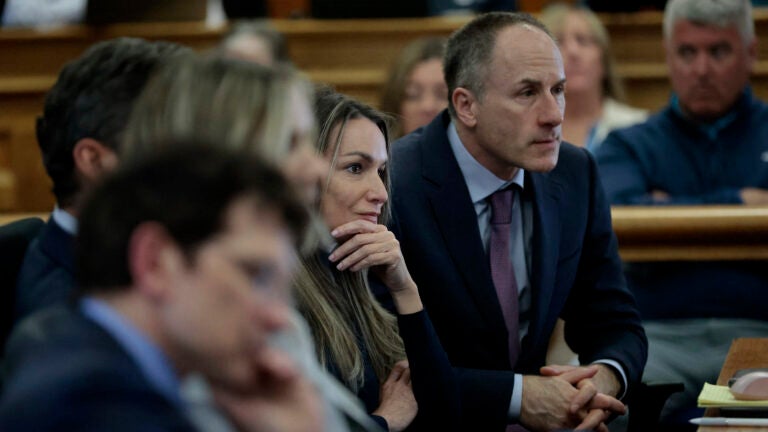Crime  Karen Read speaks to her defense attorney Alan Jackson during her murder retrial at Norfolk Superior Court in Dedham, Mass., on Tuesday, April 29, 2025. Libby O’Neill/The Boston Herald via AP, Pool
Karen Read speaks to her defense attorney Alan Jackson during her murder retrial at Norfolk Superior Court in Dedham, Mass., on Tuesday, April 29, 2025. Libby O’Neill/The Boston Herald via AP, Pool
By Abby Patkin
updated on April 29, 2025 | 7:01 PM
On the stand Tuesday:
Crash reconstructionists from ARCCA Inc. will be allowed to testify for the defense during Karen Read’s retrial, Judge Beverly Cannone decided Tuesday.
The ruling came after special prosecutor Hank Brennan argued the experts engaged in “subterfuge” and failed to comply with a court order requiring them to turn over their communications with Read’s lawyers. He asked Cannone to keep them off the stand.
The two witnesses, Daniel Wolfe and Andrew Rentschler, testified in a tense hearing Monday without jurors present.
Wolfe admitted to deleting his texts with defense attorney Alan Jackson following Read’s first trial, adding, “That’s something I routinely do.” He testified he later communicated with Jackson via the encrypted messaging app Signal, but had no records of the communication.
Wolfe told the court ARCCA expects to have a new report and analysis ready by May 7. Brennan argued the situation is “fundamentally unfair” to prosecutors, whose own experts won’t have sufficient time to review the new material.
A visibly frustrated Cannone interrupted defense attorney Robert Alessi as he tried to argue the defense team’s position, adding, “You’re going to win this, so why don’t you just let me make my ruling?”
She noted Read’s defense committed “repeated and deliberate” violations of reciprocal discovery orders and told Brennan she understood “the ambush that has been set upon here.” However, she continued, “a defendant’s right to a fair trial is paramount to everything.”
Cannone left the door open for a “robust” cross-examination of the ARCCA witnesses and offered a stern warning to the defense attorneys before ending Tuesday’s proceedings.
“No more nonsense,” she ordered. “Let’s just try this case.”
Speaking to reporters outside the courthouse, Read thanked Alessi profusely for fighting to keep the ARCCA experts on the witness list.
“I believe that was fair and right, and I appreciate it,” she said of Cannone’s decision.
Read also said she had “nothing to say” to witness Jennifer McCabe, who began her testimony in the case Tuesday afternoon. Read said trial watchers can expect “a lot” from the defense during McCabe’s upcoming cross-examination.
McCabe said she was met with screaming when she groggily answered her cellphone early on Jan. 29, 2022.
The 4:53 a.m. call came from her friend, John O’Keefe’s, teenage niece, she recalled Tuesday, but a voice screaming in the background belonged to O’Keefe’s girlfriend, Read.
“Jen! Jen!” Read allegedly yelled.
“And then she’s screaming that John didn’t come home, she left him at the Waterfall,” McCabe testified, naming the Canton bar where she drank with Read and O’Keefe the night before.
Read was “hysterical,” she added. “It was loud enough and long enough that my husband shot up in bed thinking one of my kids had come into the room screaming.”
McCabe said the mood had been “cheerful” as she shared drinks with friends and family at the Waterfall Bar & Grille hours earlier. When Read and O’Keefe walked in, “I was happy to see them,” she said. “I loved John and I liked Karen.”
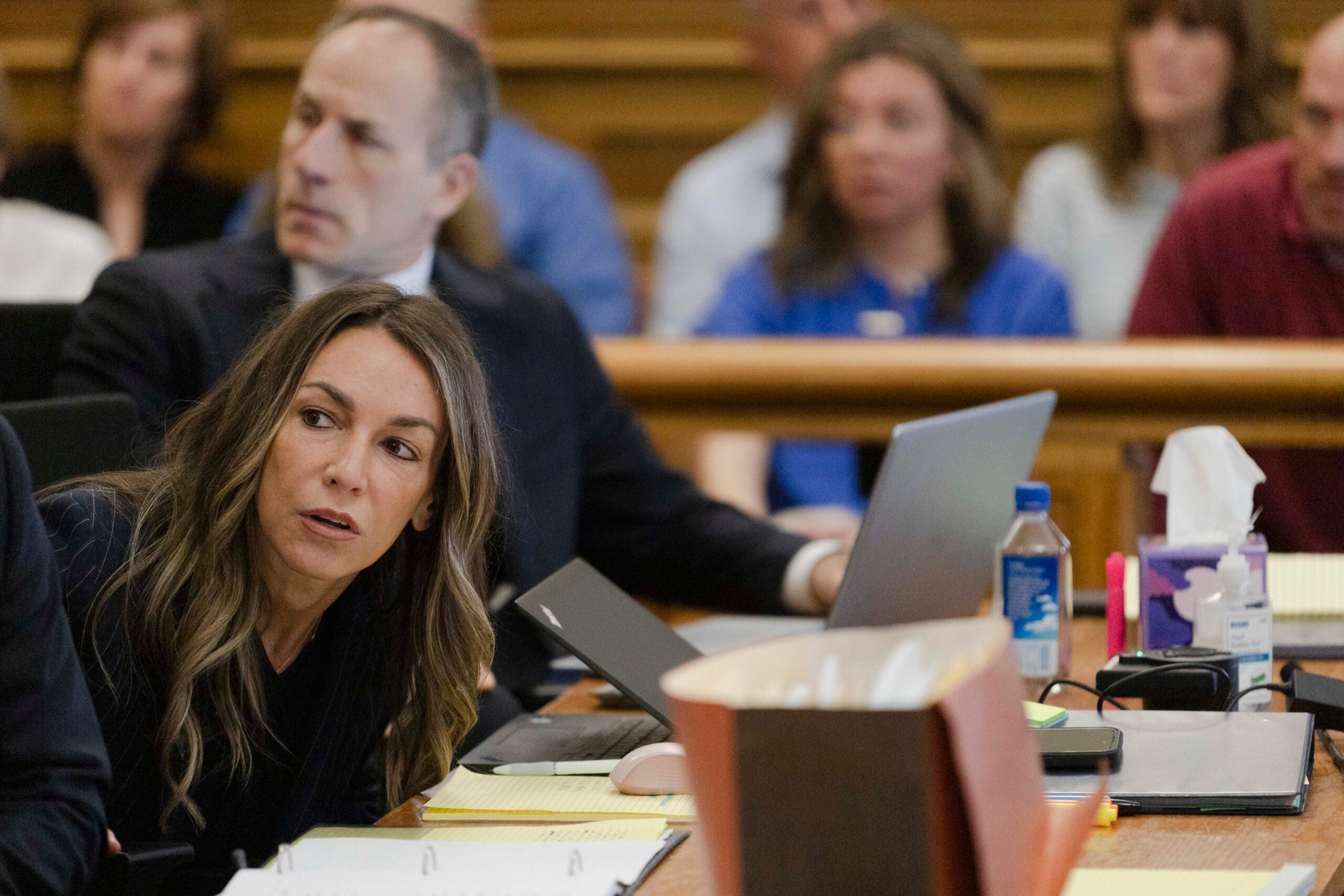 Karen Read listens to testimony during her murder retrial at Norfolk Superior Court in Dedham, Mass., on Tuesday, April 29, 2025. – Libby O’Neill/The Boston Herald via AP, Pool
Karen Read listens to testimony during her murder retrial at Norfolk Superior Court in Dedham, Mass., on Tuesday, April 29, 2025. – Libby O’Neill/The Boston Herald via AP, Pool
McCabe, who described herself as a “typical small-town mom,” told jurors she met O’Keefe when her daughter became friends with his niece. O’Keefe decided to raise his niece and nephew after their parents died, and McCabe said she and O’Keefe became close friends as he leaned into his new role as “Mr. Mom.”
“He was a very good friend of mine that I knew I could call for anything,” she added. McCabe said she met Read in July 2020, and the two women bonded over their mutual diagnosis of multiple sclerosis.
Flash forward to the evening of Jan. 28, 2022, and McCabe’s sister, Nicole Albert, was already at the Waterfall with a small group of people when McCabe and her husband arrived. Others joined them as the night wore on, including Nicole Albert’s husband, Brian, and Read and O’Keefe.
As their time at the Waterfall wound down, Nicole and Brian Albert invited the group back to their house at 34 Fairview Road, where their son, Brian Jr., was celebrating his birthday with some friends. McCabe said she spoke with O’Keefe and Read and understood they planned to join the afterparty.
O’Keefe asked her for directions, and McCabe recalled speaking to him over the phone on the drive over to Fairview Road. She said she used “Bella’s house” as a landmark when providing directions, referring to a girl who was friends with O’Keefe’s niece and McCabe’s daughter.
The atmosphere inside 34 Fairview Road was lighthearted and celebratory, she testified, with drinks, music, jokes, and chatter.
“Everybody was in a great mood,” McCabe said, adding she saw no fights, arguments, or physical violence inside the home.
She said she spotted a dark SUV outside the house at one point and, believing it was Read’s, texted O’Keefe to ask if he and Read had arrived. When the SUV pulled up toward a flagpole outside the home, McCabe sent another text with instructions to park behind her car. Neither Read nor O’Keefe ever made it inside the house, she said, and the dark SUV eventually left.
Special prosecutor Hank Brennan asked McCabe if she ever went outside to try to talk to Read and O’Keefe, and McCabe said she didn’t.
“Why would I?” she asked. “I had no reason to.”
McCabe said she and her husband stayed at 34 Fairview Road until about 1:45 a.m. and agreed to drive two of Brian Albert Jr.’s friends home. The wind and snow had picked up by the time they left through the front door, and McCabe said she “curled up” and ran to her car. While her husband drove, McCabe sat in the passenger seat and swiveled to talk to the two younger women in the back seat.
She told jurors she texted a few people and made some Google searches after she got home, researching a basketball team that had offered her daughter a spot. Until the 4:53 a.m. call, she said, the rest of the night was peaceful.
Following the frantic conversation with O’Keefe’s niece and Read, McCabe said she made some calls in hopes of tracking down her friend. Though Read had told her she left O’Keefe at the Waterfall, McCabe’s husband reminded her they had seen Read’s car outside 34 Fairview Road.
She called O’Keefe’s niece back and heard more screaming from Read, who allegedly said she didn’t remember going to Fairview Road.
“She started saying, ‘Could I have hit him? Did I hit him?’” McCabe recalled. “She was hard to follow or understand. … She also informed me she had cracked her taillight.”
McCabe decided to go search for O’Keefe, but she heard more screaming as she was getting ready — this time in front of her home. She found a “hysterical” Read outside and testified that Read asked to go back to Fairview Road and again wondered aloud whether she could have struck her boyfriend.
McCabe said she and Read spoke over the phone with O’Keefe’s friend, Kerry Roberts, who met up with them, took charge of the situation, and suggested searching for O’Keefe back at his house. McCabe recalled trying to comfort O’Keefe’s “terrified” niece after they searched the home and found no sign of him.
McCabe said Read also showed her and Roberts the damaged taillight, which was “missing pieces.” According to McCabe, Roberts noticed a piece of the light was jutting out and was concerned someone might snag their coat on it.
The three women piled into Roberts’s car to continue their search, and McCabe said Read was “adamant” they go to Fairview Road. She testified that Read continued to scream and act erratically on the drive there, asking at one point if O’Keefe could be with “Bella’s mom” — a woman he had dated years prior.
As they approached 34 Fairview Road, McCabe said Read yelled something along the lines of, “There he is! Let me out!” Roberts screeched to a stop, and Read hopped out and ran over to the front lawn. According to McCabe, Roberts called Read “bats*** crazy,” but they got out and followed.
“It wasn’t until I got very close over to them that I saw … Kerry removing the snow from John’s face,” McCabe recalled tearfully.
“I couldn’t believe it was him,” she added.
She and Roberts locked eyes, and McCabe called 911.
“I think I knew in that moment that John — that John, you know, was dead,” she said, voice choked with emotion.
Cellebrite digital forensics expert Ian Whiffin gave jurors a live demonstration Tuesday to account for the confusion over the timing of witness Jennifer McCabe’s now-infamous “hos long to die in cold” Google search.
Displaying an iPhone screen, he made a series of searches and showed jurors how the so-called “last viewed timestamp” still reflected when he had first opened the tab.
Whiffin explained the timestamp could be confusing to the untrained eye and said Cellebrite ultimately changed its software to remove that timestamp because they realized it could be subject to misinterpretation.
Defense attorney Robert Alessi confirmed a digital forensics tool from one of Cellebrite’s competitors still reflects the disputed 2:27 a.m. timestamp for McCabe’s search, despite Whiffin’s testimony that McCabe actually made the search hours later.
Separately, special prosecutor Hank Brennan asked Whiffin to revisit some of the factors that can impact location data accuracy, aside from the device being inside a building. Whiffin named weather, geography, and electrical interference.
Brennan asked if location data could also be impacted if someone were covering the phone so it wasn’t exposed to air, as John O’Keefe allegedly was.
“I believe it could, yes,” Whiffin replied.
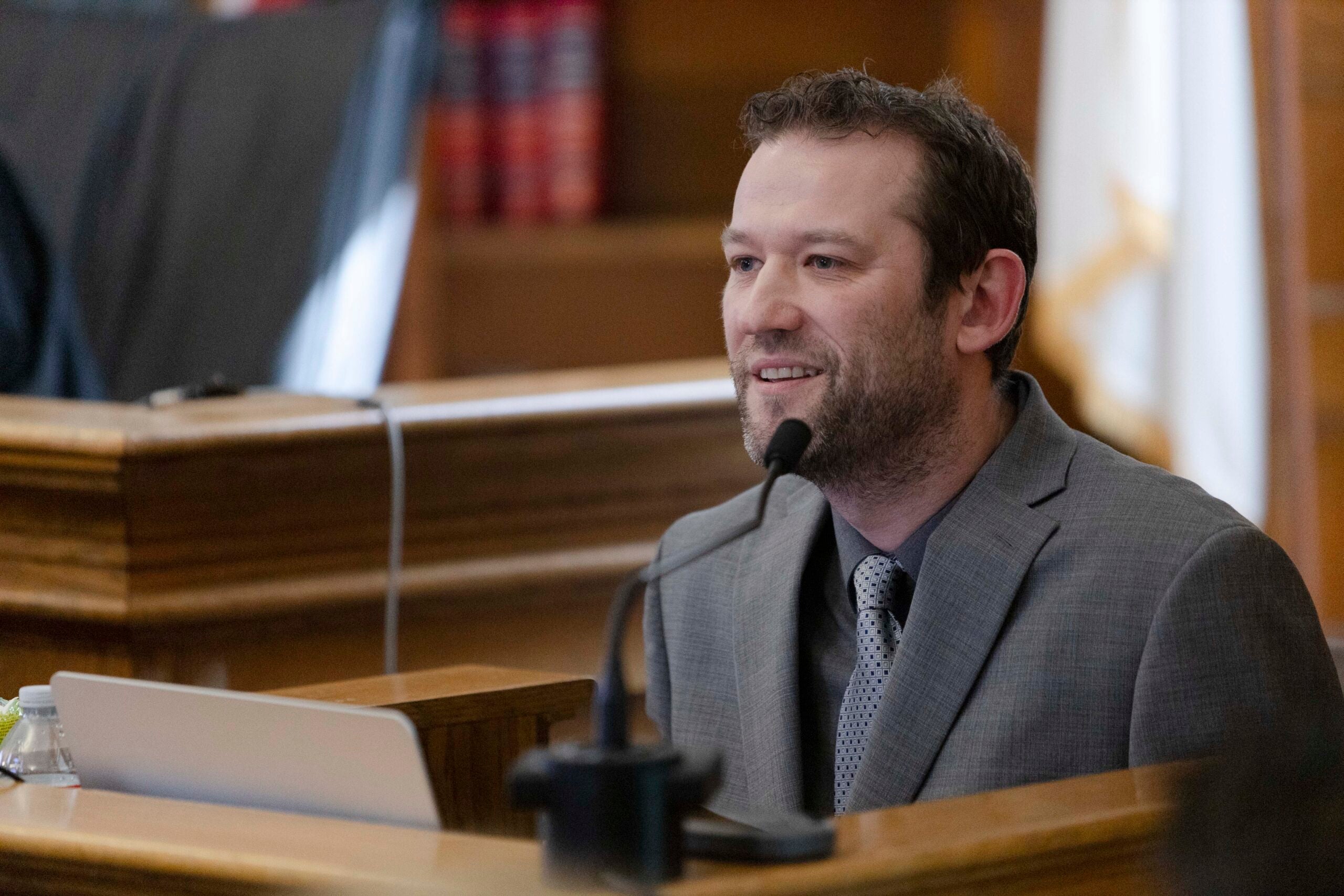
As he got into the brunt of his cross-examination Tuesday, defense attorney Robert Alessi sought to highlight sections of Ian Whiffin’s report suggesting less-than-perfect location data accuracy for John O’Keefe’s cellphone.
In one section of his report, the Cellebrite digital forensics expert mentioned 12 minutes of “low accuracy records” that offer “no reliable location information” following O’Keefe’s arrival at 34 Fairview Road.
As Whiffin noted in his report, the reason for the low-accuracy location data was unknown in this instance, though possible explanations include entering a building or covered area. Weather conditions, geography, and poor connectivity were other potential factors, according to an excerpt of the document shown to jurors.
Jurors on Monday also viewed an aerial image with several points indicating the location of O’Keefe’s phone in front of 34 Fairview Road. However, Alessi noted the jury had not previously seen a second image from Whiffin’s report showing a much larger potential radius. Pressed by Alessi, Whiffin confirmed O’Keefe’s phone could have been anywhere within the larger circle.
“According to your report, the phone of John O’Keefe could be in the house, correct?” Alessi asked.
“Based on the low-accuracy information, yes,” Whiffin replied.
Whiffin wrote in his report that the GPS coordinate for O’Keefe’s phone and associated accuracy radius “jumps around” several times between the house and the road. Alessi also noted Whiffin wrote that the data shows the device moving “towards the house,” though Whiffin acknowledged he did not include that information in the timeline he showed jurors Monday.
Alessi next asked Whiffin about a report submitted to the prosecution by crash analysts who identified a “trigger event” at about 12:31 a.m. on Jan. 29, 2022. Whiffin confirmed the purported trigger would have happened before O’Keefe’s phone recorded activity around 12:32 a.m., including 36 steps.
Whiffin previously testified that O’Keefe’s phone battery temperature steadily dropped following his arrival at 34 Fairview Road, and Alessi pressed him on the tests he did indicating iPhones are heavily affected by ambient temperature when the device is in a locked state with little activity.
Alessi asked if Whiffin was aware battery temperature could be used to determine a phone’s location. Whiffin said he couldn’t see how battery temperature could determine location, other than to say whether the device was inside or outside. He also testified he didn’t know what the temperature was in Canton on Jan. 29, just that there had been a blizzard.
“So you didn’t think it was important, even though you issued a report discussing the temperature of the iPhone, and you did two test scenarios … and you didn’t think it important to take the final step to see whether there was anything to be gained from that comparison to determine where that phone was located?” Alessi asked.
“My testing proved that the battery temperature is affected by ambient temperature,” Whiffin replied. “My report shows the data that was on the device. I also don’t know the condition that the phone was found in, whether it was in a case, whether it was in a pocket. So to me, the ambient temperature in Canton at the time wasn’t particularly relevant.”
‘Hos long’ search comes into focus
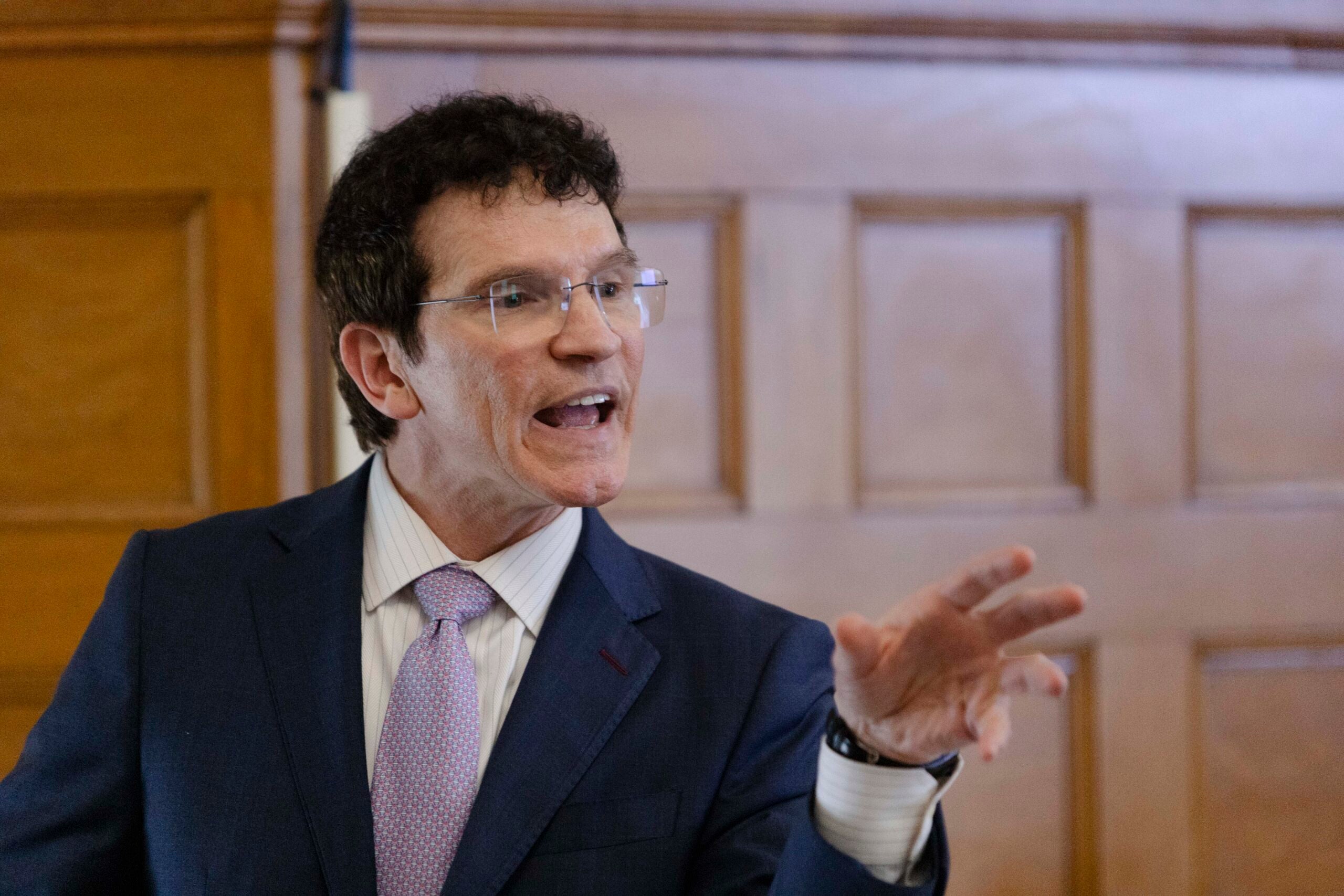 Defense attorney Robert Alessi cross-examines Ian Whiffin. Libby O’Neill / The Boston Herald via AP, Pool
Defense attorney Robert Alessi cross-examines Ian Whiffin. Libby O’Neill / The Boston Herald via AP, Pool
Following a brief midmorning recess, Alessi homed in on Whiffin’s prior testimony regarding witness Jennifer McCabe’s now-infamous “hos long to die in cold” Google search. Whiffin previously opined McCabe made the search at 6:24 a.m. on Jan. 29, asserting the 2:27 a.m. timestamp offered by the defense actually indicates when McCabe first opened the Safari tab she used.
Alessi questioned Whiffin on the importance of hash values, a unique identifier generated for a data file. Alessi likened hash values to a fingerprint or the seal on a carton of milk — in other words, a way to indicate whether data has been tampered with.
“If the hash doesn’t match, then something has changed in the data,” Whiffin confirmed.
Alessi asked Whiffin whether he noted an “issue” with the hash value for data from McCabe’s phone in a report he wrote in December 2024.
“The hash value matches, but because I didn’t do the extraction, I’m unable to actually validate that was an original hash and hadn’t been modified,” Whiffin testified.
“So you couldn’t determine whether any of the data on that cellphone of Jen McCabe had been tampered with, correct?” Alessi asked in a subsequent question.
“I take a holistic view of the data and try to find anomalies and didn’t see any that raised any flags,” Whiffin replied.
Alessi noted Whiffin wrote in his report that the hash value could be used as a suggestion of authentication but “cannot be guaranteed 100%.” He also pointed out that at the time of Whiffin’s testimony during Karen Read’s first trial, one of Cellebrite’s tools still showed a 2:27 a.m. timestamp for McCabe’s Google search.
“But that timestamp doesn’t exist anymore, and it doesn’t exist today, does it?” he asked.
“Correct,” Whiffin replied.
“Cellebrite removed it?” Alessi fired back.
“Yes,” Whiffin confirmed.
Whiffin testified that Cellebrite made the change as a result of issues that arose leading up to Read’s first trial. At Alessi’s prompting, he agreed one of Cellebrite’s digital forensic software competitors still shows the 2:27 a.m. timestamp.
Alessi asked Whiffin if he understood the significance of the dispute over the timing of the “hos long” search, but Judge Beverly Cannone sustained an objection from prosecutors before Whiffin could answer.
As special prosecutor Hank Brennan stepped up for redirect examination, Whiffin denied Brennan had ever told him what to look for in O’Keefe’s phone data or tried to influence his process and findings.
“The data is the data,” Whiffin agreed. He similarly denied that anyone had tried to influence his testing on battery temperatures.
Brennan asked Whiffin whether he could offer an opinion on the whereabouts of O’Keefe’s phone to a reasonable degree of scientific certainty, based solely on location data.
“It’s difficult to give an answer … to a high degree of scientific certainty based on the sporadic nature of the records that night,” Whiffin explained.
However, he testified he relied on more than just location data to form his opinion that O’Keefe’s phone never moved far from the flagpole outside 34 Fairview Road. O’Keefe’s Apple Health, battery temperature, and “pocket state” data were also factors, he explained.
As for McCabe’s phone data, Whiffin told jurors he looked for issues that would sound the alarm about potential tampering, though the data points all “made perfect sense.”
“That kind of leads you to believe that it’s not been tampered with, or the person tampering with it did an exceptional job to be able to cover all of these different tracks and make it undetectable,” he testified.
Brennan asked Whiffin whether he went into Cellebrite’s software and changed it to accommodate law enforcement. Whiffin said he would never do such a thing.
“Aside from being unethical to change the data in that way, this is an artifact that is easily validated by any examiner, and if I were to tamper [with] it for the purposes of changing the outcome of a case, it would be detected by all of our customers immediately and would destroy the reputation of Cellebrite, which I’ve got no intention of doing,” he added.
Cannone called a lunch break shortly before 1 p.m. It was not immediately clear whether Whiffin’s testimony would continue after the break.
Livestream via NBC10 Boston.
Digital forensics expert Ian Whiffin is expected back on the stand Tuesday as testimony resumes in Karen Read’s murder retrial.
Whiffin, an expert from Cellebrite, testified Monday about one of the most contentious pieces of evidence in Read’s case, witness Jennifer McCabe’s “hos long to die in cold” Google search from Jan. 29, 2022.
While Read’s lawyers claim the search is timestamped at 2:27 a.m., McCabe maintains she made the search hours later, after she, Read, and Kerry Roberts found Read’s boyfriend, Boston Police Officer John O’Keefe, unresponsive in the snow.
Whiffin testified that the 2:27 a.m. timestamp actually indicates when McCabe opened the Safari tab she used for the search. He put the “hos long” search and another hypothermia-related inquiry shortly after 6:20 a.m. on Jan. 29.
Read, 45, is accused of ramming O’Keefe with her SUV in a drunken rage while dropping him off at a house party in Canton shortly after midnight on Jan. 29. Prosecutors allege she left her boyfriend of two years to die in a blizzard, but her lawyers say she was a “convenient outsider” framed in a conspiracy among law enforcement and other party guests. They’ve floated an alternate theory that O’Keefe was attacked after walking into 34 Fairview Road.
However, Whiffin opined that O’Keefe’s phone data suggests the device never left the vicinity of the flagpole on the home’s front lawn. He also said the three flights of stairs the device logged that morning were likely not the result of O’Keefe actually climbing stairs, but a change in altitude as he traveled in a moving vehicle.
Read’s first trial ended in a mistrial last summer after jurors returned deadlocked. Her lawyers soon filed an appeal to drop two of her three charges, alleging the jury in the first trial internally — and unofficially — agreed to acquit her of second-degree murder and leaving the scene of a fatal accident.
The defense turned to the U.S. Supreme Court earlier this month after the state’s Supreme Judicial Court and the lower federal courts rejected Read’s appeal. However, the Supreme Court this week denied Read’s petition for a writ of certiorari, effectively ending her appeal.
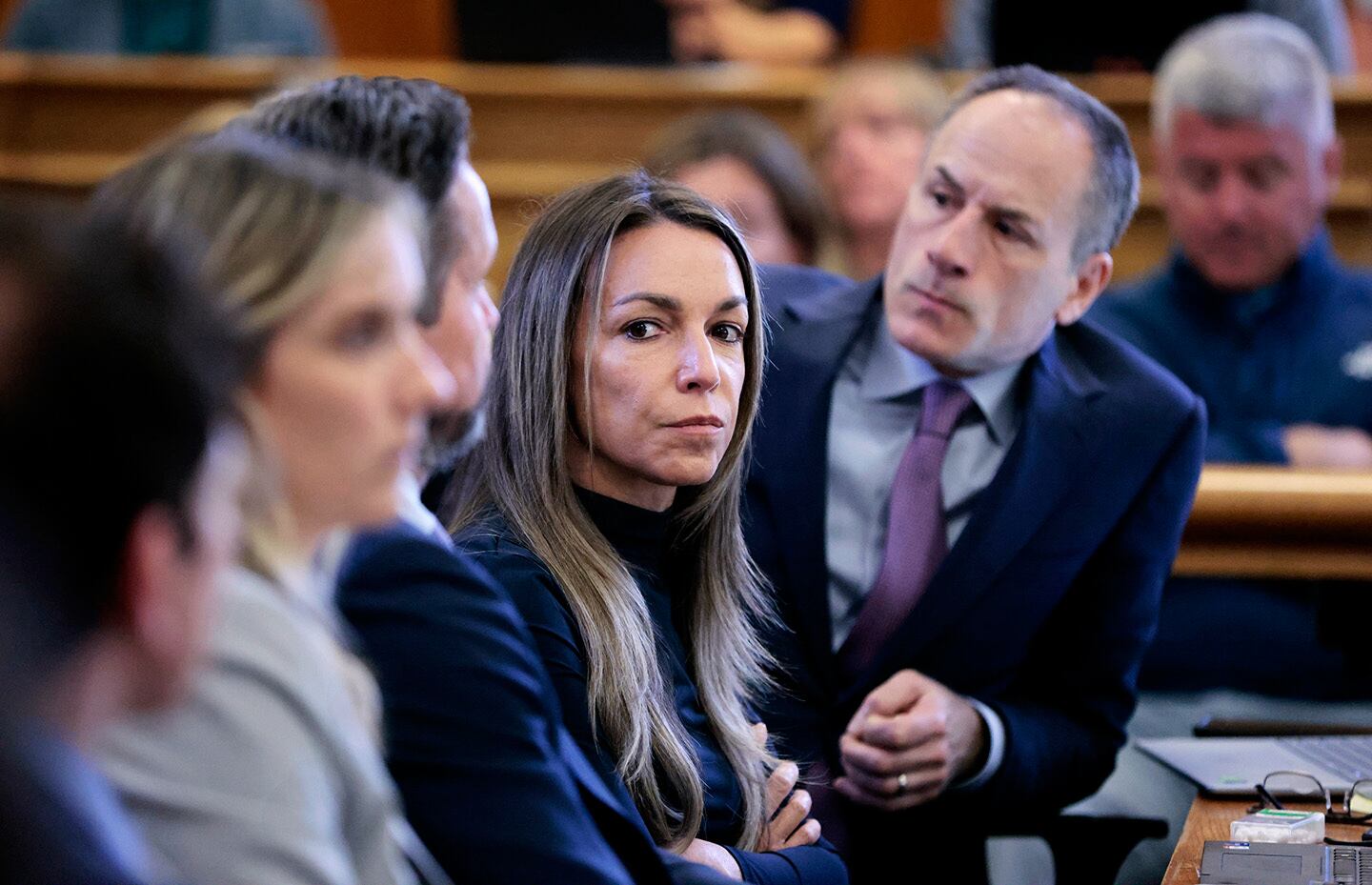 Karen Read looks toward her defense attorney Robert Alessi, as special prosecutor Hank Brennan questions Ian Whiffin, a digital intelligence expert with Celebrite, about the data on John O’Keefe’s iPhone during her murder retrial in Norfolk Superior Court in Dedham on Monday. – Pat Greenhouse/Boston Globe Staff
Karen Read looks toward her defense attorney Robert Alessi, as special prosecutor Hank Brennan questions Ian Whiffin, a digital intelligence expert with Celebrite, about the data on John O’Keefe’s iPhone during her murder retrial in Norfolk Superior Court in Dedham on Monday. – Pat Greenhouse/Boston Globe Staff
Sign up for our Extra newsletter to get updates from the retrial and other breaking news alerts delivered to your inbox.

